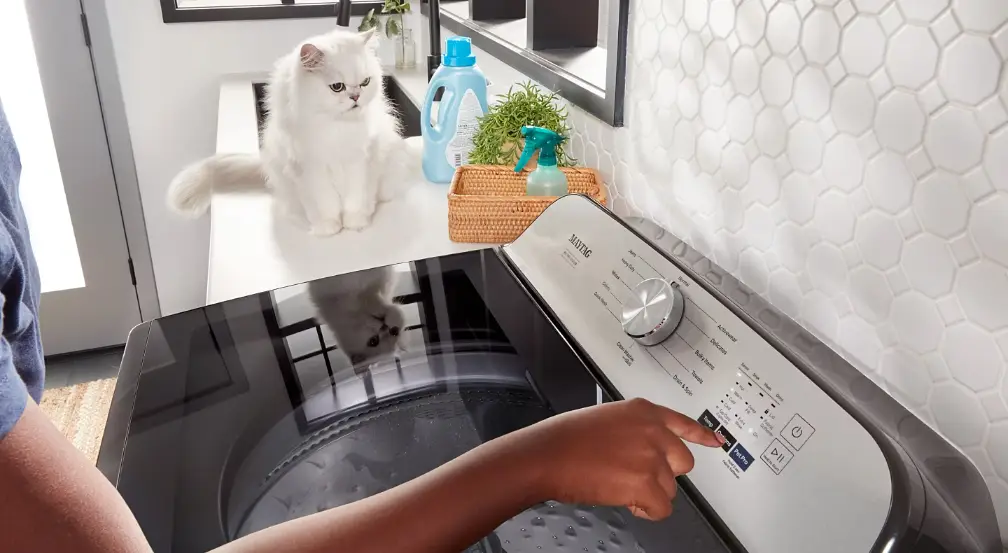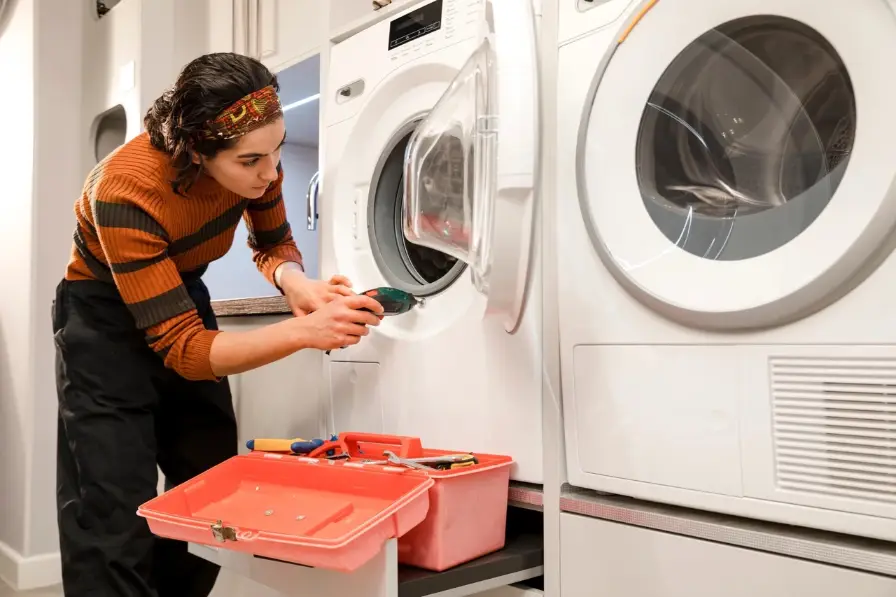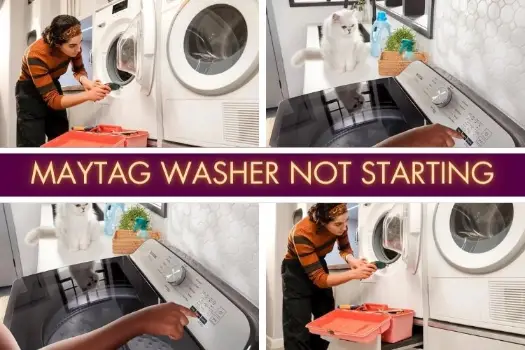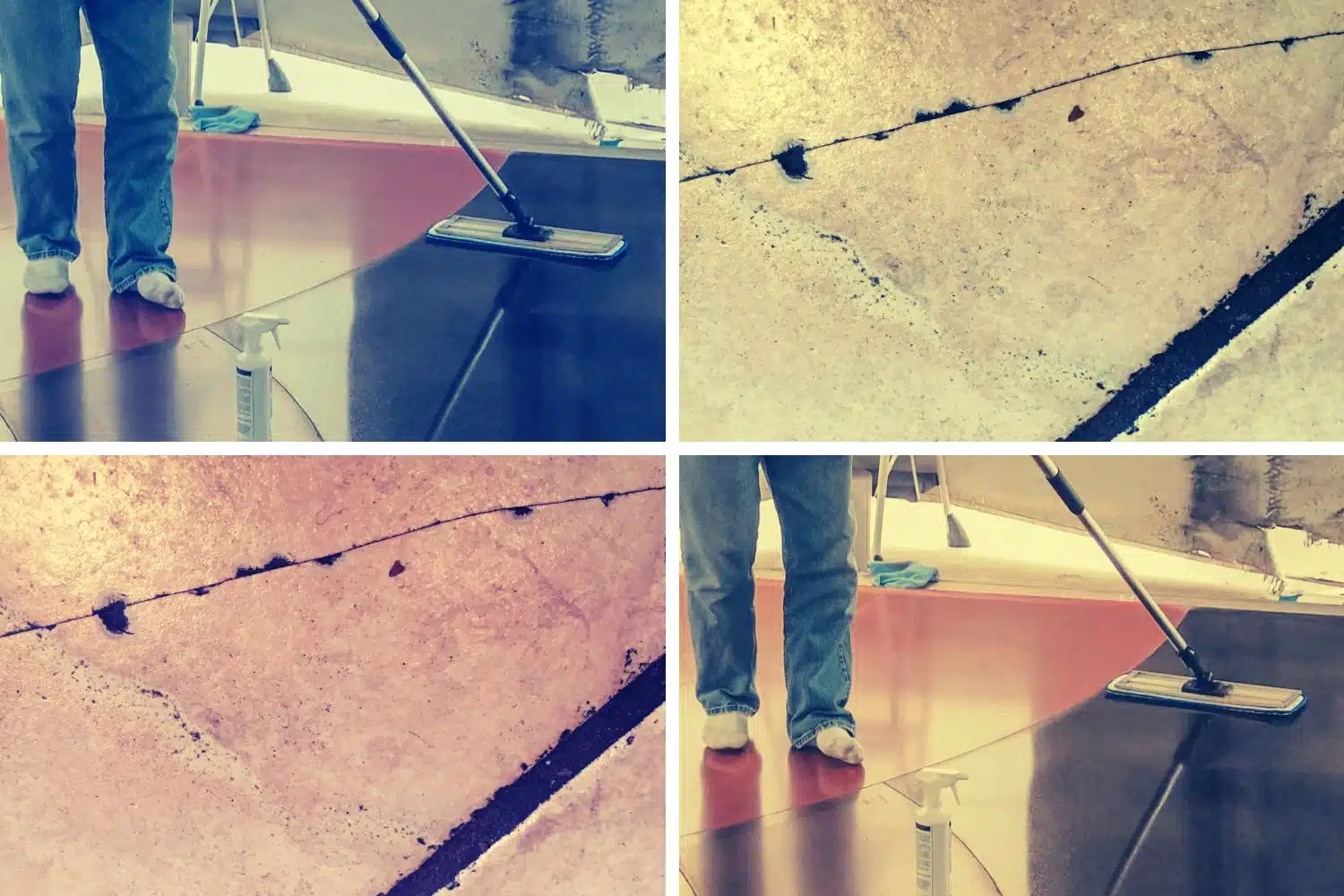Understanding Why Your Maytag Washer Not Starting
Common reasons a Maytag washer not starting include electrical issues (like a tripped circuit breaker or unplugged cord), a malfunctioning control board, a jammed door lock assembly, or a faulty user interface. Quick checks and component replacements often resolve these issues.
Quick Fixes to Try Before Calling for Professional Help

1. Check Power Supply
The first and simplest check is to ensure your Maytag washer is plugged in and that no circuit breakers have tripped. A lack of power is a common reason why your Maytag washer not starting. Here’s a breakdown of what you should do:
- Check the Power Connection: Ensure the washer’s power cord is firmly and correctly plugged into the electrical outlet. Sometimes, someone may accidentally dislodge or not fully insert the plug.
- Inspect the Power Cord: Look for any visible signs of wear or damage on the power cord. Damage could prevent the washer from receiving power.
- Test the Electrical Outlet: You can test the outlet by unplugging the washer and plugging in another small device, such as a lamp or a hairdryer. If the other device works, the problem might not be with the power supply.
- Check the Circuit Breaker: Go to your home’s electrical panel and locate the circuit breaker for the laundry area. Check if it’s in the “Off” position or midway between “On” and “Off,” which could indicate a tripped breaker.
- Check for a Blown Fuse: If your home uses a fuse box instead of a circuit breaker, check if the fuse associated with your laundry area is blown. A blown fuse typically has a cloudy or blackened appearance and needs to be replaced.
- GFI (Ground Fault Interrupter) Outlet: If your washer is plugged into a GFI outlet, check if the outlet has tripped. This can happen with appliances that draw a lot of power.
- Avoid Using an Extension Cord: It’s best practice to plug washers directly into a wall outlet. Using an extension cord or a power strip can sometimes cause power issues.
2. Inspect the Door and Lock

If the door does not close or the latch does not engage, your washer may interpret this as an open door and refuse to start. Check for any clothing obstructing the door and ensure the latch engages correctly. Here are some steps to address the problem if your washer’s door won’t close or the latch doesn’t engage:
- Inspect for Obstructions: Look at the door and the area around the gasket (the rubber seal around the door) for any clothing or foreign objects that might prevent it from closing properly.
- Clean the Door Gasket: Over time, the gasket can accumulate detergent residues, lint, or other debris, preventing the door from sealing correctly. Gently clean the gasket with a damp cloth to remove any obstructions.
- Examine the Door Latch: Look at the door latch mechanism for any visible signs of damage or wear. In such cases, the latch or the entire locking mechanism might need replacement, which are two possible steps toward fixing the issue.
- Check the Door Hinges: Sometimes, the issue might be with its alignment due to loose or damaged hinges.
3. Reset the Control Board
Sometimes, the washer’s electronic brain, the control board, needs a reset. This is akin to rebooting a computer and can often fix issues where the board fails to initiate a wash cycle. Here are some steps to test:
- Unplug the washer: Start by unplugging the washer from the power outlet. Ensuring a hard reset of the electronic control board. This action will cut off all power to the machine.
- Wait for a While: Leave the washer unplugged for 1 to 5 minutes. This waiting period dissipates any residual electricity stored in the washer’s circuits.
- Press and Hold the Power Button: While the washer is unplugged, press and hold the power button (or sometimes the start button) for about 5 to 10 seconds.
- Plug the Washer Back In: After waiting, plug the washer back into the electrical outlet, which might even resolve the issue if it was due to a temporary glitch. If you had to switch off the power at the breaker, turn it back on.
- Perform a Test Cycle: Try running a short wash cycle without laundry to see if the reset has resolved the problem. This test will help determine if the control board or another component might be malfunctioning.
- Consult the Manual: If resetting doesn’t work, consult your washer’s manual.
4. User Interface Check
Make sure the user interface (the panel you use to start the washer and select cycles) is not faulty. An unresponsive or defective interface can prevent proper cycle selection. How to examine for a Faulty User Interface:
- Basic Inspection: Start with a visual inspection of the panel. Look for signs of damage, such as cracks, loose buttons, or wear and tear. Ensure the display (if your model has one) is not cracked or shows garbled information.
- Responsiveness: Test all the buttons or touch areas on the panel to ensure they respond as expected. Try using different parts of your finger or a stylus if necessary for touch panels. Ensure the machine responds to your selections without excessive pressure or having to press multiple times.
- Error Codes: Some washers show error codes when there’s a problem with the interface or other components. Consult your washer’s manual (often available online) for specific codes and meanings.
- Power Cycle: Turn off your washer and unplug it for a minute. This can sometimes reset the system and resolve temporary glitches affecting the panel’s responsiveness.
- Connections and Cleanliness: Dirt, water, or detergent buildup can affect panel performance. Gently clean the interface with a soft, slightly damp cloth. Avoid using harsh chemicals.
Diagnosing More Complex Issues when Your Maytag Washer Not Starting
1. Error Codes
Maytag washers display error codes that can illuminate the cause of the problem. Consult your user manual or look up the code online to understand what it means and how to address it. Here’s a general overview of how you might address these error codes:
- Identify the Error Code: When your Maytag washer displays an error code, note the specific code or sequence of letters and/or numbers.
- Consult the User Manual: The first and often best resource is the washer’s manual. Most manuals include a list of error codes and their meanings. If you don’t have the manual handy, Maytag’s official website often provides digital copies you can download by entering your model number.
- Look Up the Code Online: If the manual is not immediately available, a quick internet search with your washer model and the error code can yield information on the issue and potential solutions.
- Understand the Problem and Attempt a Solution: Once you know what the code signifies, you can decide on the best course of action.
2. Door Lock Assembly
A jammed or defective door lock can prevent the washer from starting because it fails to send the signal that the door is securely locked. Replacing the lock assembly may be necessary. Here are steps you can take if you suspect the door lock is the reason your washer isn’t starting:
- Inspect the Door Lock Mechanism: First, make sure nothing is obstructing the door from closing.
- Test the Door Strike: This is the part of the door that engages with the lock mechanism. If it’s damaged or misaligned, the door won’t lock. Make any necessary adjustments or replacements.
- Examine the Door Lock Assembly: Look for any signs of damage or wear. If you have a multimeter, you can use it to test the door lock for continuity. Lack of continuity indicates the lock is defective and needs replacement.
- Replacement: If indeed defective, you will need to replace the door lock assembly.
3. Electronic Control Board and User Interface Issues
If resetting doesn’t work, the control board or user interface may be faulty and require replacement. These parts are key to the washer’s operation; when they fail, the appliance may stop working. Here’s a brief overview of what these components are and why they’re crucial:
- Control Board: The control board is a sophisticated circuit board that processes inputs from the user interface (e.g., wash cycle selection) and sensors. It controls the motors, pumps, valves, and other electrical components based on these inputs. It manages the timing, water level, temperature, and spin speeds during the wash cycles.
- User Interface (UI): This part allows you to interact with the washer. It includes the control panel buttons, dials, and display screens through which you select cycles and settings. The UI communicates your selections to the board, which then executes them.
4. Water Supply and Drain Problems
A washer that can’t fill or drain due to issues with the water supply or drain system may also fail to start. Take a look at hoses and filters for obstructions. Here are some steps you can take to diagnose and potentially fix the problems:
- Checking Hoses for Obstructions: Ensure the water supply hoses are not kinked or twisted, as this can block the water flow to the washer. Also, Check the drain hose for kinks or bends.
- Inspecting the Water Inlet Filters: Many washers have small filters at the point where the hoses connect to the washing machine. Over time, sediment or debris can clog these filters, restricting water flow into the machine.
- Drain System Checks: Some washers have a user-accessible drain filter or lint trap that can be cleaned. Consult your washer’s manual for instructions on accessing and cleaning this component.
When to Seek Professional Repair Services
While many issues with a Maytag washer not starting can be addressed with DIY fixes, complex problems, especially those involving the electronic control board or internal components, often require the expertise of a professional repair technician. If you’ve tried the above steps without success, or if the repair involves replacing parts and you’re not comfortable doing it yourself, it’s time to call in a professional.
Related: Beko Washing Machine Problems
Preventing Future Issues
Regular maintenance can prevent common problems and extend the lifespan of your Maytag washer. This includes:
- Checking and cleaning the door seal and latch to ensure they engage properly.
- Use the correct type and amount of detergent to avoid clogs and ensure your washer can fill and drain without problems.
- Following the manufacturer’s guidelines for load sizes to prevent overloading.
By incorporating simple maintenance habits, you can avoid many common issues that stop a Maytag washer from starting, ensuring your appliance remains in proper working order for years to come.
Conclusion
Experiencing a Maytag washer that fails to start a cycle can be a major inconvenience. This detailed guide is designed to help you diagnose and fix common problems preventing your washing machine from running properly. From simple tests to more detailed repairs, cover key solutions to get your appliance working without the immediate need for professional service.
Remember, addressing problems early and understanding when to seek professional help are key to maintaining the performance and longevity of your Maytag washing machine.






